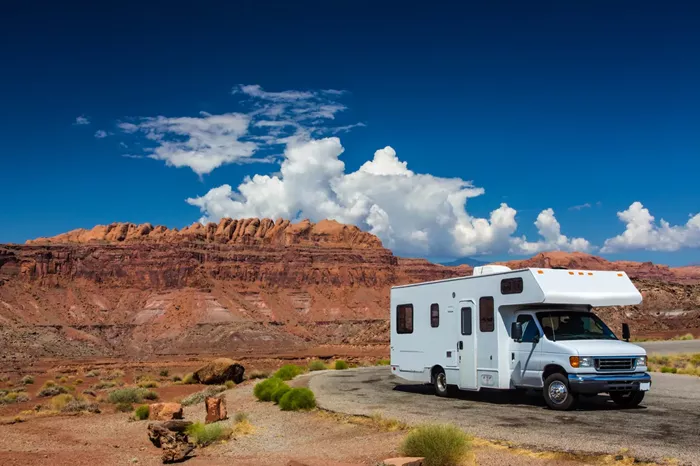Class A RVs are among the most luxurious and expensive recreational vehicles on the market. Owning one represents a significant investment, and protecting that investment with the right insurance policy is critical. Understanding the Insurance landscape for Class A RVs can help owners secure the proper financial protection while avoiding unnecessary costs. In this guide, we will explore the factors influencing Class A RV insurance cost, coverage options, and tips for getting the best deal.
What Is a Class A RV?
Before diving into insurance costs, it’s essential to understand what qualifies as a Class A RV. Class A motorhomes are large, bus-like vehicles built on heavy-duty frames. They often include full kitchens, bathrooms, bedrooms, and living areas, making them ideal for full-time RV living or extended travel. Due to their size, value, and complexity, insurance needs for Class A RVs differ significantly from smaller RVs or travel trailers.
Factors That Influence Class A RV Insurance Cost
Several factors affect the cost of insuring a Class A RV. Understanding these factors can help RV owners anticipate their expenses and plan accordingly.
1. Value of the RV
The higher the value of the RV, the more expensive it will be to insure. A brand-new Class A motorhome can easily exceed $300,000, which directly impacts the premium amounts. Insurers must account for the potential payout in case of total loss.
2. Usage Patterns
How often and for what purpose you use your RV also plays a role. Full-time RVers typically face higher premiums than those who use their RVs seasonally. More time on the road means a greater risk of accidents, leading to increased insurance rates.
3. Location
Your location can significantly impact your insurance costs. States with high rates of accidents, theft, or natural disasters can lead to higher premiums. Additionally, RVs parked in areas prone to flooding or hurricanes may require specialized coverage, increasing costs.
4. Driving History
As with regular auto insurance, your personal driving record matters. A history of accidents or traffic violations can drive up your insurance premiums for a Class A RV.
5. Coverage Types
The types of coverage you select will greatly affect your total insurance cost. Comprehensive coverage, collision coverage, personal property protection, roadside assistance, and liability insurance are all common options for RV owners. More extensive coverage translates to higher premiums.
Types of Coverage Available for Class A RVs
Understanding RV Insurance Coverage options is crucial when deciding how much protection you need. Different types of coverage can safeguard you against various risks, from accidents to theft and natural disasters.
Comprehensive Coverage
This coverage protects your RV against non-collision-related incidents such as theft, fire, vandalism, and weather damage.
Collision Coverage
Collision coverage pays for damage to your RV resulting from an accident, regardless of fault. Given the size and cost of a Class A RV, this type of coverage is highly recommended.
Liability Insurance
Liability insurance covers damages or injuries you may cause to others while operating your RV. Most states require a minimum amount of liability insurance by law.
Personal Property Protection
This coverage insures the personal belongings inside your RV, such as electronics, furniture, and clothing.
Full-Timer Coverage
If you live in your RV full-time, you may need specialized full-timer coverage, similar to a homeowner’s policy, to protect your permanent residence on wheels.
Average Cost of Class A RV Insurance
The cost to insure a Class A RV varies widely based on the factors mentioned above. However, on average, premiums typically range from $1,000 to $4,000 annually. Full-time RVers can expect to pay closer to the higher end of this range, while seasonal users may find lower premiums.
Additional Costs to Consider
In addition to standard insurance premiums, RV owners should be aware of potential additional costs, such as:
- Roadside Assistance Packages
- Emergency Expense Coverage
- Pet Injury Coverage
- Vacation Liability Insurance
- Coverage for Attached Accessories (e.g., awnings, satellite dishes)
Ways to Save on Class A RV Insurance
While insuring a Class A motorhome can be costly, there are several strategies to lower your premiums:
Bundle Policies
Many insurers offer discounts if you bundle your RV insurance with other policies, such as home or auto insurance.
Increase Your Deductible
Opting for a higher deductible can significantly reduce your monthly premiums. Just be sure you can afford the deductible if you need to file a claim.
Maintain a Clean Driving Record
Safe drivers often receive lower insurance rates. Avoid traffic violations and accidents to qualify for the best discounts.
Shop Around
Always compare multiple insurance providers to find the best deal. Using tools for Car insurance quotes can help streamline the process and identify competitive rates.
Full-Time vs. Part-Time RV Insurance
Whether you use your Class A RV full-time or part-time will significantly impact your insurance needs and costs. Full-time RVers generally need more comprehensive coverage, including liability protection similar to a homeowner’s policy. This increased protection leads to higher premiums, but it ensures you are adequately protected while living on the road.
Full-Time Coverage
Full-time RV insurance typically includes personal liability, medical payments, and loss assessment coverage, among others. It’s designed to provide robust protection comparable to home insurance.
Part-Time Coverage
For those who use their RVs only for vacations or short trips, part-time insurance offers sufficient protection at a lower cost. This policy covers the RV while it’s being driven and while it’s parked for extended periods.
Why Specialized RV Insurance Matters
Many RV owners mistakenly assume that adding an RV to their existing auto insurance policy is sufficient. However, standard auto insurance typically does not offer adequate coverage for the unique risks associated with RV ownership. Specialized RV insurance addresses specific needs like personal belongings protection, emergency lodging expenses, and full replacement cost coverage.
Choosing the Right Insurance Provider
Selecting the right insurance provider is essential to ensuring you receive the best protection at a reasonable price. Look for companies that offer flexible coverage options, discounts, and excellent customer service. Reading reviews and consulting an Insurance Guide can help you make an informed decision.
Common Mistakes to Avoid
When purchasing Class A RV insurance, avoid these common mistakes:
- Underinsuring your RV to save on premiums
- Neglecting to add personal property coverage
- Failing to disclose full-time living status
- Choosing a policy based solely on price without considering coverage limits
Conclusion
Insuring your Class A RV is not just about complying with legal requirements; it’s about protecting a significant financial and personal investment. With numerous factors influencing Class A RV insurance cost, careful consideration is crucial to selecting the right policy. Understanding coverage types, factors that affect rates, and strategies to save can make a substantial difference in your financial protection and peace of mind. By leveraging resources like RV Insurance Cost guides, you can navigate the complexities of RV insurance with confidence and ensure your journey on the open road is worry-free.
Related topic:
Progressive RV Insurance: A Complete Guide for RV Owners





















